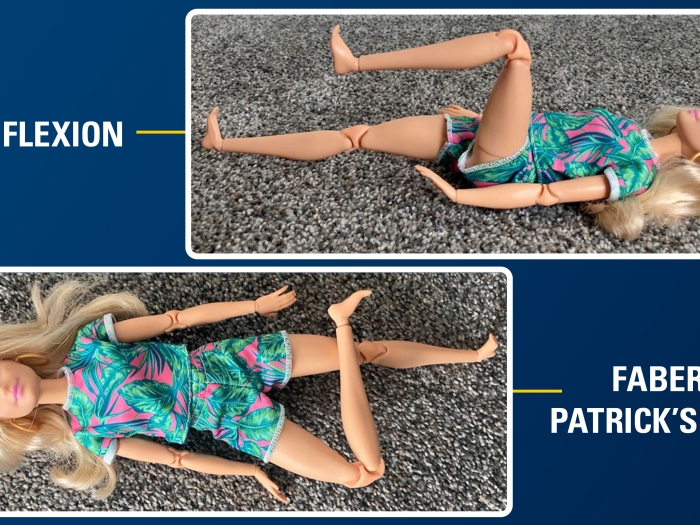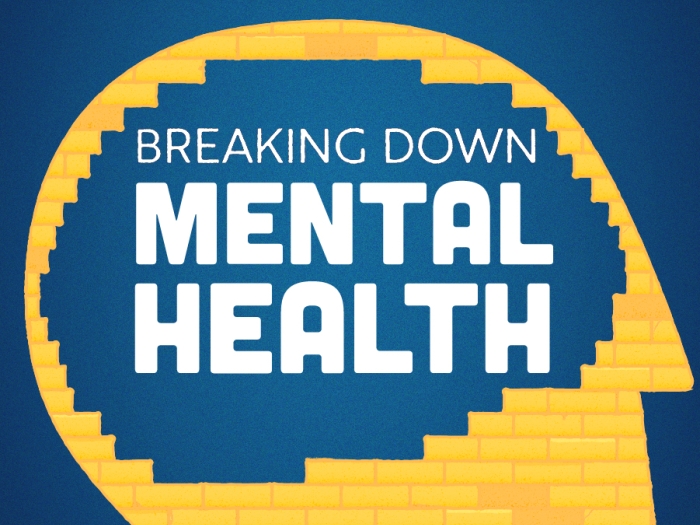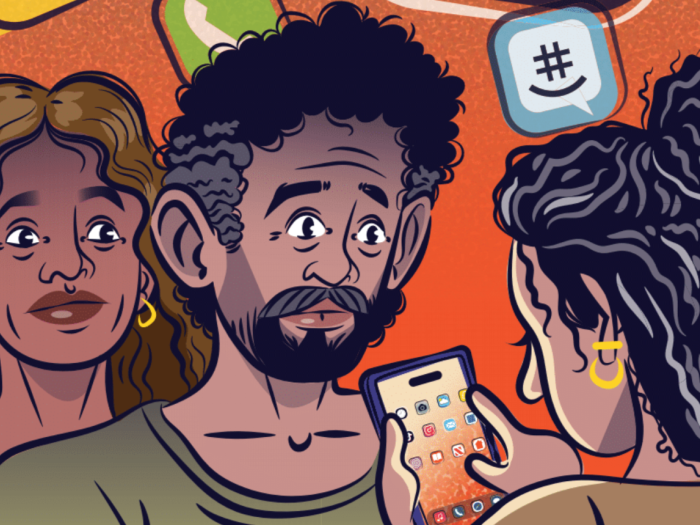Autism has been the subject of endless debate, garnered international headlines, and sent many parents to their favorite search engine looking for answers. Unfortunately, not everything you see online is based on evidence and facts, so we called in Jenny Radesky, M.D(link is external). to help us sort through myths and facts associated with the most searched questions about autism.
- What is autism?
- What are the signs of autism, and how is it diagnosed?
- What is Asperger’s syndrome?
- What causes autism?
- Is there a cure for autism?
- How do you help support someone with autism?
- What’s the connection between trains and autism?
People have a lot of questions about the autism spectrum. Dr. Radesky helps us sort facts from fiction, and navigate how we understand and help support people with autism.
More resources
- Visit Dr. Radesky’s profile
- Learn more about services for individuals with autism
Transcript
Dr. Preeti Malani:
Autism, it's been the subject of endless debate, garnered countless headlines, and sent many parents to their favorite search engine looking for answers. In fact, autism is one of the most-searched health topics on the Internet. As is often the case, not everything you see online is based on evidence and facts, so we called in an expert to help us sort through it all. Dr. Jenny Radesky is a developmental-behavioral pediatrician at the University of Michigan Health C.S. Mott Children's Hospital. Developmental-behavioral pediatricians provide care for children with developmental delays, behavioral issues, and certain mental health concerns. Dr. Radesky is a widely-respected specialist with many years of experience and I've got a list of common questions that are on the minds of many parents and family members, so without further delay, let's get started. I'm Dr. Preeti Malani, and thank you for joining us on the Michigan Answers podcast. Hello, Dr. Radesky. Thanks for joining us today.
Dr. Jenny Radesky:
Yeah, thanks so much for having me on.
Dr. Preeti Malani:
Okay, you know the drill. We've chosen one of the most searched health topics on the internet, and then handpicked an expert to help us answer the most-searched questions on that topic. That's where you come in.
Dr. Jenny Radesky:
Wait, do you mean Google doesn't know everything?
Dr. Preeti Malani:
Not everything. Let's start with basics. What is autism?
Dr. Jenny Radesky:
So, I typed that question into my own browser just to see what answers people would get first and I did this because before coming in to see me for an autism evaluation, a lot of my patient's parents, they search the internet about autism. They're wondering what it means, what it looks like, and so the internet is a crucial first source of information and impressions about what's going to be a possible journey that they're about to take with their kids. I want to point out first that the top hits, like the CDC, like WebMD, they call autism a "disability" or a "disorder." I think Autism Speaks also calls it a condition. It's a broad range of conditions characterized by challenges with social skills, repetitive behaviors, speech, and nonverbal communication.
While I, as a clinician, totally agree with that, I think as a person who has family members with autism, and I've cared for countless, thousands of kids with autism, I didn't see any definitions that really talked about how it felt to have autism, or from the child or person's perspective. I think the closest was the National Health Services from the United Kingdom actually says, "Autism's not an illness. Being autistic does not mean you have an illness or a disease. It means your brain works in a different way from other people. It's something you're born with or first appears when you're very young. Autism is not a medical condition with treatments or a cure, but some people need support to help them with certain things."
So I quote that from the National Health Service website because I liked that it centered the definition of autism around the person who that person is, who you are in the world, not about how autism differs from the rest of us "normal people." I really think that aligns more with what I've heard from kids and adults with autism. They may not see it as a disability. I've heard them describe it as a unique set of gifts and challenges that they have to learn to work around or ask for help for, and their parents often need to adapt in their parenting to help their child communicate and build social capacities that just make life easier for the child.
Finally, I think one thing that Google doesn't offer is some of the first-person narratives of what it feels like to have autism. I think people can look up new books, like “The Reason I Jump,” by Naoki Higashida, he's a 13-year-old who wrote about what autism feels like. Temple Grandin has talked about seeing life in pictures. I think, even though I'm glad that the medical and scientific voices are offered first by Google, we also need to recognize that being on the autism spectrum is about seeing the world differently, and in order for us as parents to adapt to who our kids are, or for society to help meet us where we are in terms of the... Sorry, I don't want to say "me" because I'm not identifying as autism, but in order for parents to adapt to who their child is and how they see the world, or for society to help accommodate to people with autism, I think we also need to frame this from how it feels to have the world be a bit overwhelming sometimes.
Dr. Preeti Malani:
Next question: What are the signs of autism?
Dr. Jenny Radesky:
The science shows that we can start seeing the signs of autism reliably as young is 14 months, okay, and so usually what you see is language delay, but not always. You can also have kids with really advanced speech. But for the children with language delay, even though they're struggling to communicate with words, they're not compensating with other body language. Usually, a child who just has a language delay but not autism will use their eye contact. They will point, they will gesture. They will do anything with their body to get your attention and show you things, so you can see that they're trying to say, "Look at that," or, "I want that."
One thing with autism is they're not trying to get other people's attention as frequently. They may do it a lot more with their parents or people that they've spent a lot of time around because those people are more predictable to them, but it's much harder them to apply those skills in a new setting, like a school classroom or a library sing-a-long hour. Those are going to be more overwhelming to them because there's so much new social information flying at them and it's harder for them to process, so for this reason, kids with autism, even in toddler years, may prefer to play alone. They may not realize that they could ask for someone's help. They're not referencing people, meaning looking over and seeing what the other person is doing to adjust what they should be doing.
Then we also see these restrictive and repetitive behaviors. These include repetitive hand movements or posturing the body in a way that's kind of stiffening up or flipping fingers or putting fingers together or in front of the face. Repetitive language can include repeating or echoing words, memorizing your favorite TV show and scripting from it over and over and over again, and then also some rigidity, like really insisting: "You have to have the same robe on and say exactly the same words every time you put me to bed, Mom. Otherwise, bedtime's going to be a disaster." Or food always needs to be in exactly the same way, or you always have to drive home exactly the same way. That's because the world feels unpredictable to kids with autism and they really like to stick with strict routines to help the world feel like it makes more sense.
When it doesn't make sense, they can have some extreme tantrums, especially when their senses are overwhelmed, so they may be overly sensitive to skin, touch, or to flavor, or to movement, or they may seek out those things, too. They may run and tumble and love to tickle and wrestle. They may love to swing on swings. As you could see, it's this huge, huge range. That's why it's so confusing for parents when they look up a definition online and they probably get what most kids have, a list of those symptoms, but it isn't always going to encompass exactly who your child is.
I just want to mention that some kids fly under their radar in early childhood because they're pretty high-functioning, but once the school demands increase or social dynamics get a little bit more hard to read, more of those autism symptoms can come out, so we definitely see kids who don't present until they're four or five or six and it's more typical that those children don't have as many language delays, but they may have really rigid or restricted behaviors that can make it hard for them to adapt to chaotic classrooms.
Dr. Preeti Malani:
Just a related question. The term "Asperger's" gets used a lot. How does that fit in with the definition and signs of autism?
Dr. Jenny Radesky:
Asperger's syndrome was a subtype of autism spectrum disorder that children were usually higher-functioning, meaning they had higher intelligence. They may have had more rigid behaviors and social difficulties, such as shyness or not really understanding other people's perspective. It's no longer in the DSM-5, which is our manual of diagnoses, but people still like to identify either themselves or their child as having Asperger's, so I don't see a problem with still using that term, I just want families to understand it still falls under the autism spectrum. It may mean that some children who are higher-functioning may need help in different domains, meaning a child with Asperger's may need more social skills groups, they may need more cognitive behavioral therapy to help them realize when their thoughts are getting stuck and they're not seeing someone else's perspective, whereas a child with autism who has limited language output, or who has more hyperactive behaviors may need more one-on-one ABA, that's applied behavioral analysis, the sort of behavioral therapy that helps kids with autism.
Dr. Preeti Malani:
Yeah, so all of this gets at the fact that it is a very diverse group and the approaches has to also be diverse.
Dr. Jenny Radesky:
Exactly. I always tell people at the time of a child's diagnosis, that this spectrum is called a "spectrum" because kids vary so much. It's a group of conditions that all have the same sort of characteristics, but your child is still your child, right? They still have their own unique set of strengths and challenges and I don't want people to get so over overwhelmed with the label that they forget about how cool their individual child is, right? That's one of the processes that parents go through when they're adjusting to having this new diagnosis is still loving their child for who they are, but understanding what isn't coming as easily to them so that they can tailor some therapies to get them into a place where day-to-day life doesn't feel as hard.
Dr. Preeti Malani:
Speaking of diagnosis, how do you know if someone has autism? Is there a test?
Dr. Jenny Radesky:
We don't have a blood test or a brainwave test or an MRI or anything that's like a biomarker for autism. What we do is some highly structured behavioral and developmental testing. I'd love to just take a few minutes to demystify that for listeners because families sometimes don't really know what's going to happen when they come to our clinic. It may just look like we're playing with kids, but we've all undergone hours and hours of training on how to do this reliably, how to make sure that when we're playing with a child, we're looking for all the things like eye contact, like back and forth, what we call "social reciprocity." That's the give and take when you're playing with someone, that, "I have an idea. Oh, I'm going to build the blocks this way. Will you follow what I'm doing?" Or if a child is showing behavioral rigidity, where they just want to play with their own ideas.
We're also looking for whether kids have really unique ways of playing with objects. They might look at the wheels on a car. They may love staring at the legs on a table. They may be really fascinated with the parts of objects or how they feel in a sensory way. They may also have a hard time with imaginative play, where if I hand them a baby doll and they are like, "Uh-uh (negative), I don't play with these." I've had some kids, even I put out action figures for them as part of the ADOS, which is our Autism Diagnostic Observation Schedule, and I've had kids say, "I don't play like that because there's just too many options and it overwhelms me," so they'd rather have more clear, structured play. When we enter a little bit more of the chaos into the play, we can see that sometimes it's hard for them to adapt to it.
It's not just the ADOS that a developmental pediatrician like myself or a psychologist or a neurologist could do. There's also some structured interviews like the ADI-R, the Autism Diagnostic Interview, that take a while to administer. Then other clinics will do other sorts of ways that the parents are reporting on autism symptoms. But the best approach we have is the ADOS, this developmental testing, where we're really scoring every single interaction that we're doing with a child.
Dr. Preeti Malani:
What do we know about the causes of autism? For example, is autism a genetic condition?
Dr. Jenny Radesky:
It's a combination of genes and environment. We know there's a strong genetic component to autism by looking at the occurrence of autism in identical twins. They share all the same genetic material and studies have shown they develop autism, both twins, in 36 to 95% of the time. That's much higher than what occurs in the general population, which is like one to two percent of kids, about one in 55, have autism, and then younger siblings of children who have autism are also at higher risk of having autism. It depends on whether you're a boy or a girl, or whether you're a big sibling was a boy or a girl. It can range from about 7% to 50%, but again, that's higher than the one to two percent in our general population.
We don't always know what gene mutation or gene difference caused the autism. We still send kids for genetic testing, because we can identify a genetic cause in up to 12% of kids and it's important to know if there's something like fragile X syndrome or tuberous sclerosis. These are genetic syndromes that can be associated with autism and they need special follow-up. Now, I think parents often notice, too, the genetics of autism that run in our family, like you as a parent may not have all the autism features, but some parents say, "Oh, yeah, yeah, I was really shy as a child," or, "I get really stuck on certain topics," or, "I get overwhelmed by sensory input," so it's important to know that all these autism symptoms are really just an extreme degree of some of our traits.
But I want to just mention that when it comes to the environmental contributors, these are things like, did a mom take prenatal vitamins? Was the child premature? Prematurity increases the risk of autism spectrum disorder, having older parents does, but it's not vaccines, it's not how you parent, it's not the foods you eat. There's been plenty of research showing that it really is not those environmental factors. I think finally, some people wonder about environmental contaminants, like mercury or pesticides. There's some early research on this, but it's really not a slam dunk yet, and I think it's hard for parents to do much about what's in your environment that children may be exposed to, so I think that's more of an issue for governments to be cleaning up.
Dr. Preeti Malani:
Probably lots of good reasons to try to keep our environment clean.
Dr. Jenny Radesky:
Yeah.
Dr. Preeti Malani:
So, autism therapies are one of the topics that is particularly popular to search. What do we know about the treatment of autism? What does and doesn't work?
Dr. Jenny Radesky:
One important thing to say is that there's no cure for autism, so if you're ever seeing search results that say "autism cure," just know that's probably trying to prey upon worried parents and probably trying to make money, even though it's unproven.
Actually, in autism, we really more focus on improving functioning through treatments and therapy. There's applied behavioral analysis, that's the behavioral therapy that tries to understand what a child is struggling with, what skills they need some extra teaching on, and how to reinforce those skills, meaning how do you naturally reward a child who's making more eye contact by repeating the tickling and fun game you were just playing with them? In addition to that, we do speech and language therapy to help children build more words or more non-verbal communication or conversation skills depending on their level of functioning. We do occupational therapy to help with the sensory symptoms and some motor coordination that often kids struggle with in autism.
Social skills groups are really important for helping kids practice how to take other kids' perspectives and have the back and forth of play. I mentioned cognitive behavioral therapy before. That's to help kids who are higher-functioning or older understand their thoughts and what anxieties or obsessive or compulsive symptoms they may have. And then school supports are crucial, that the school understand the child's strengths and challenges and help the child feel included.
All of this takes a lot of work and investment of time. That's why I really encourage parents not to be clicking on the stuff that says, "Fast and easy cure," because things like hyperbaric oxygen or high-dose vitamins, those are often advertised, often on social media, but there's no proof that they help, and they're really just going to be a waste of time and money for parents.
Dr. Preeti Malani:
Okay, so if you've listened to the show before, you know I usually like to sneak in another question of my own. There's a lot out there online about autism and trains. Is there a connection?
Dr. Jenny Radesky:
So, here, I'd like to go back to what I was talking about at the beginning, about seeing autism from the individual's perspective, or the child's perspective. Trains are something a lot of my patients or family members who have autism love for a couple of reasons. One is that trains whiz by really fast and they are fun to look at in a sensory way. I've seen kids who love watching videos on YouTube of trains going by or super fast speed trains whizzing by. They're also really fun to organize and line up. Kids with autism love predictable play. That's often in the same way, so lining up trains and zooming them around in predictable ways. Then many older kids love schedules. They love keeping track of things by time and location and arrivals and departures, and so many people with the Asperger-type of autism may be really interested in memorizing those types of schedules.
Again, this gets to the fact that kids with autism, they don't have the same filters that we do. Their brain is over-connected. All of the brain neurons that usually gets pruned, the word "pruning" just means that all of these brain connections, usually around age two or three, start to get peeled back so that just the important ones remain and that we can process information really fast without having all this extra noise going on in our brain, so kids with autism don't have as much pruning, we think, and they are basically filtering in tons of information all at the same time, and they may be paying attention to just the details or not filtering out what our brains would normally just not pay as much attention to. That's why the world may feel overwhelming to them.
It may feel like one of us, like walking through Times Square, or it may feel like the book I mentioned before, “The Reason Why I Jump,” is he talks about when he sees rain, he looks at each individual raindrop. He doesn't get that cohesive feeling of, "This is rain. What do I do in rain?" Right? Each of those. Can you imagine focusing on each individual raindrop? You'd be so overwhelmed, right?
So, part of the play that comes with trains is that it's really predictable and it's really easy for it to be the same way every time. Of course, there are other reasons that kids may love trains. It may be Thomas the Train, it may be other things that I'm not covering, because again, this is a spectrum. There's so many different perspectives here. But I really would love for families to be seeing things from their kid's eye level and for society to do that as well because these kids are neuro-diverse. They're part of our society and I want them to be included and understood as much as possible.
Dr. Preeti Malani:
Thank you for sharing your time with us today, Dr. Radesky.
Dr. Jenny Radesky:
Yeah, thank you.
Dr. Preeti Malani:
Thank you for listening to this week's episode of Michigan Answers. This season, we're unpacking some of the most-searched-for health topics on the internet. If you join today's episode, please subscribe wherever you get your podcasts, and if you're interested in learning more about how Michigan Medicine is improving lives and advancing health, you can visit us at michigananswers.com. See you next week.

Listen to more Michigan Answers podcasts - a part of the Michigan Medicine Podcast Network.





